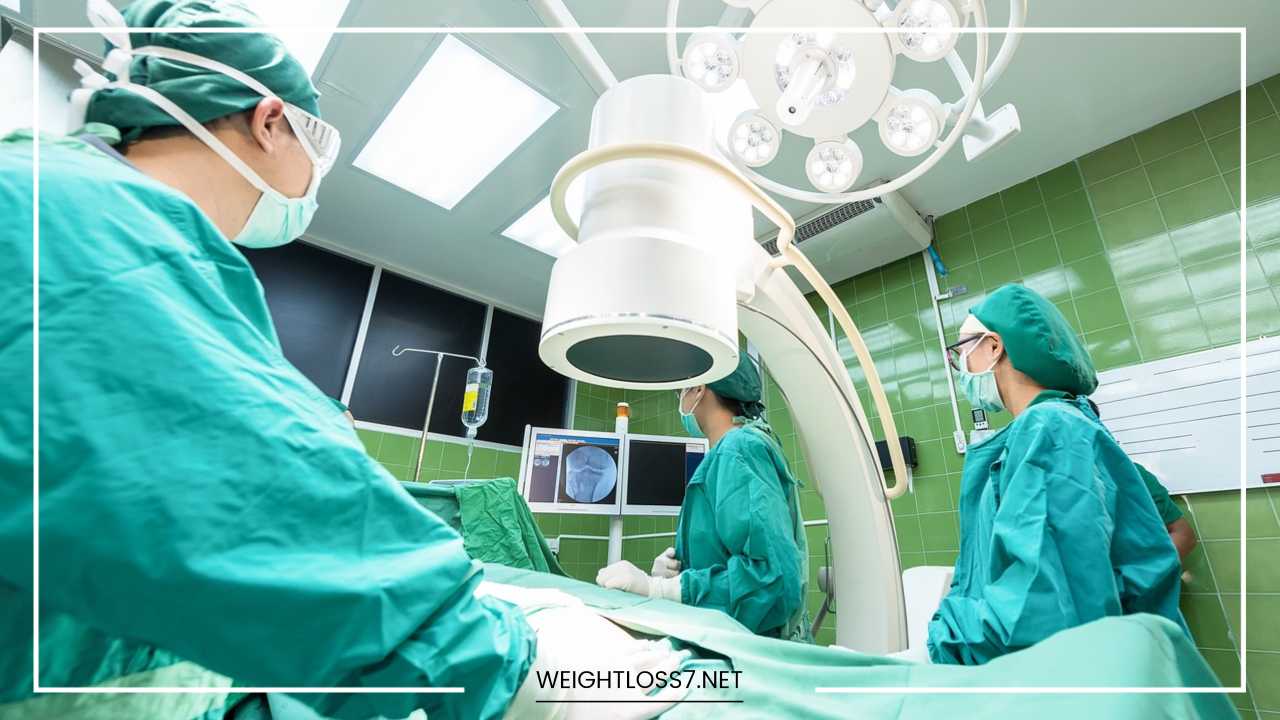Laparoscopic Varicocelectomy: A Minimally Invasive Approach to Improve Male Fertility

Laparoscopic Varicocelectomy
Laparoscopic Varicocelectomy: A Minimally Invasive Approach to Varicoceles
Varicoceles, enlarged veins in the scrotum, are a surprisingly prevalent condition affecting up to 15% of men. While often asymptomatic, varicoceles can cause significant discomfort, pain, and even infertility.
If you’re experiencing these issues and seeking treatment, laparoscopic varicocelectomy might be the optimal solution for you.
This blog post delves comprehensively into everything you need to know about this minimally invasive surgery, from understanding the underlying condition to exploring the procedure itself, recovery expectations, and potential risks.
Understanding Varicoceles: A Deeper Dive
The scrotum houses the testicles, the male reproductive glands responsible for sperm production. Blood flows through a network of veins in the scrotum to drain away waste products.
When these veins become enlarged and varicose, similar to varicose veins in the legs, it’s called a varicocele.
The exact cause of varicoceles remains under investigation, but several theories prevail. One theory suggests malfunctioning valves within the veins, leading to improper blood flow and subsequent vein dilation.
Another theory proposes anatomical abnormalities in the spermatic vein, the main vein draining the testicles, causing blood to pool and enlarge the veins.
Varicoceles and Their Impact on Fertility
The potential impact of varicoceles on fertility is a significant concern for many men. Studies have shown a correlation between varicoceles and reduced sperm quality, including decreased sperm count, motility (movement), and morphology (shape).
The exact mechanism behind this connection is still being explored, but several potential explanations exist. The abnormal blood flow caused by varicoceles might lead to an increase in scrotal temperature, which can negatively affect sperm production.
Additionally, varicoceles might contribute to oxidative stress, damaging sperm DNA and hindering its ability to fertilize an egg.
Symptoms and Diagnosis of Varicoceles
Varicoceles can present in a spectrum of ways. Some men might experience no symptoms at all, while others might have:
- A dull ache or pain in the scrotum, especially after prolonged standing or physical activity
- A feeling of heaviness or dragging sensation in the scrotum
- Visible enlargement of the veins in the scrotum, often described as a “wormy” or “bag-of-worms” appearance
- Reduced sperm count, motility, or morphology, discovered during a fertility workup
If you suspect a varicocele, a physical examination by a urologist is the first step. The doctor will feel the scrotum for abnormal vein enlargement.
A specific maneuver called Valsalva maneuver, where you’re asked to bear down as if straining for a bowel movement, might be used to further assess the varicocele. Additionally, a scrotal ultrasound with Doppler imaging is a crucial diagnostic tool.
This painless procedure uses sound waves to visualize the structure of the scrotum and assess blood flow within the veins.
By measuring the blood flow pattern and identifying any abnormal reflux (backflow) in the veins, the ultrasound with Doppler imaging can confirm the presence and severity of a varicocele.
Treatment Options for Varicoceles: A Comparative Analysis
There are several ways to treat varicoceles. The most common surgical approaches are:
- Open Varicocelectomy: This traditional surgery involves making an incision in the groin or abdomen to access and ligate (tie off) the affected veins. While effective, it can lead to more pain, larger scars, and a longer recovery time.
- Laparoscopic Varicocelectomy: This minimally invasive approach is gaining significant popularity due to its numerous advantages over open surgery, which will be discussed in detail later.
- Embolization: This non-surgical option involves accessing the spermatic vein through a catheter inserted in the groin and injecting a material to block the abnormal blood flow. While minimally invasive, embolization might not be suitable for all cases and carries a small risk of complications like nontarget embolization (blocking unintended blood vessels).
Advantages of Laparoscopic Varicocelectomy: A Minimally Invasive Approach
Compared to open surgery, laparoscopic varicocelectomy offers several compelling benefits that make it the preferred choice for many men:
- Smaller Incisions: Only a few small punctures are made in the abdomen, resulting in minimal scarring. This translates to a more cosmetically pleasing outcome.
- Reduced Pain: Less invasive surgery translates to less postoperative discomfort. Pain management is typically achieved with oral medication.
- Faster Recovery: Patients typically go home the same day or shortly after surgery and can resume normal activities within a few days. This quicker recovery time allows for a faster return to work and daily routines.
- Magnified Visualization: The laparoscope provides a magnified view of the surgical field, allowing for greater precision during vein identification and ligation. This improves visualization and minimizes the risk of injuring surrounding structures like nerves or arteries.
- Lower Risk of Complications: Laparoscopy is associated with a lower risk of bleeding, infection, and damage to surrounding structures compared to open surgery.
The Laparoscopic Varicocelectomy Procedure: A Step-by-Step Guide
Here’s a detailed breakdown of what to expect during a laparoscopic varicocelectomy:
-
Pre-operative Consultation: You’ll schedule a consultation with your urologist to discuss the procedure in detail. During this consultation, your doctor will explain the benefits and risks of laparoscopic varicocelectomy, address any questions you may have, and perform a physical examination. Additionally, you might undergo routine blood tests and chest X-rays to ensure you’re medically fit for surgery.
-
Preparation for Surgery: On the day of surgery, you’ll likely be asked to arrive at the hospital a few hours before the procedure. You’ll be instructed to refrain from eating or drinking anything for a specific timeframe beforehand. The surgical team will prepare you for anesthesia, which is typically general anesthesia to ensure you’re comfortable and pain-free throughout the procedure.
-
Surgical Process:
- Creating Access: The surgeon will make a few small incisions in your lower abdomen, typically near the navel.
- Insufflation: Carbon dioxide gas will be insufflated (inflated) into your abdomen to create a clear workspace and allow for better visualization of the internal organs.
- Laparoscopic Visualization: A laparoscope, a thin, lighted instrument with a camera at its tip, will be inserted through one of the incisions. The laparoscope transmits high-resolution images of the internal organs onto a monitor, allowing the surgeon to visualize the surgical field.
- Identifying the Spermatic Veins: Using the magnified view from the laparoscope, the surgeon will locate the enlarged spermatic veins.
- Isolating and Ligating the Veins: With the assistance of additional surgical instruments inserted through the other incisions, the surgeon will meticulously isolate and ligate (tie off) the affected veins using clips or sutures. This effectively blocks the abnormal blood flow within the varicocele.
- Verifying Hemostasis: Once the veins are ligated, the surgeon will meticulously check for any bleeding and ensure proper hemostasis (blood clotting).
-
End of Procedure and Recovery: After successfully completing the procedure, the laparoscope and surgical instruments will be removed. The carbon dioxide gas will be evacuated from your abdomen, and the small incisions will be closed with stitches or surgical glue. You’ll be monitored in the recovery room until you’re stable enough to go home. You might experience some discomfort which can be managed with pain medication prescribed by your doctor.
What to Expect After Laparoscopic Varicocelectomy
Following surgery, you can expect:
- Pain: Mild to moderate pain is common, usually managed with oral medication. Pain medication will be prescribed by your doctor, and it’s crucial to follow their instructions carefully.
- Scrotal Swelling: Temporary swelling in the scrotum is normal and usually subsides within a few days. Applying ice packs to the scrotum can help alleviate swelling and discomfort.
- Activity Restrictions: You might be advised to avoid strenuous activity for a short period, typically a week or two, to allow for proper healing. Your doctor will provide specific recommendations regarding activity restrictions.
- Follow-up Appointments: Your doctor will schedule follow-up visits to monitor your recovery and assess the success of the surgery. These appointments typically occur within the first week after surgery and then periodically over the next few months.
Potential Risks and Complications of Laparoscopic Varicocelectomy
As with any surgery, laparoscopic varicocelectomy carries some potential risks, though less common compared to open surgery. These include:
- Infection: As with any surgical procedure, there’s a small risk of infection at the incision sites. It’s crucial to maintain proper wound care as instructed by your doctor to minimize this risk.
- Bleeding: Bleeding is a potential complication during or after surgery. However, the risk is lower with laparoscopy due to the use of magnified visualization and meticulous surgical techniques.
- Damage to Nearby Structures (e.g., nerves, blood vessels): While uncommon, there’s a small risk of injuring nearby structures like nerves or blood vessels during surgery. The magnified view and precision offered by laparoscopy help minimize this risk.
- Recurrence of Varicocele: While uncommon, varicoceles can recur in some cases. The success rate of laparoscopic varicocelectomy is generally high, but it’s important to discuss the potential for recurrence with your doctor.
- Hydrocele (fluid collection around the testicle): Fluid accumulation around the testicle, known as hydrocele, can sometimes develop after varicocelectomy. This is usually a benign condition and might not require any treatment. However, if the hydrocele is large and causing discomfort, it can be drained with a needle or surgically removed.
Improving Sperm Quality After Laparoscopic Varicocelectomy
While laparoscopic varicocelectomy aims to improve sperm quality by correcting abnormal blood flow, it’s important to understand that sperm production takes time. It can take several months for sperm quality to improve after surgery.
Your doctor might recommend semen analysis at regular intervals after surgery to monitor sperm parameters.
Lifestyle Modifications to Enhance Sperm Health
In addition to surgery, certain lifestyle modifications can contribute to improved sperm health:
- Maintaining a Healthy Weight: Obesity can negatively impact sperm quality. Losing weight if you’re overweight or obese can improve sperm parameters.
- Regular Exercise: Engaging in regular physical activity can improve sperm count and motility.
- Dietary Changes: A healthy diet rich in fruits, vegetables, and whole grains can provide essential nutrients for sperm production. Limiting unhealthy fats and processed foods can also be beneficial.
- Avoiding Tobacco and Excessive Alcohol: Smoking and excessive alcohol consumption can significantly decrease sperm quality. Quitting smoking and limiting alcohol intake are crucial steps for improving sperm health.
- Managing Stress: Chronic stress can negatively affect sperm production. Techniques like yoga or meditation can help manage stress levels.
Final Word
Laparoscopic varicocelectomy is a safe and effective minimally invasive surgical procedure for treating varicoceles. It offers several advantages over traditional open surgery, including smaller incisions, reduced pain, faster recovery, and minimal scarring.
If you’re experiencing symptoms of varicoceles and considering treatment, discussing laparoscopic varicocelectomy with your urologist is crucial.
They can assess your individual situation, explain the benefits and risks of the procedure, and determine if it’s the right course of action for you.
By taking a proactive approach and addressing varicoceles, you can potentially improve your fertility and overall well-being.

















